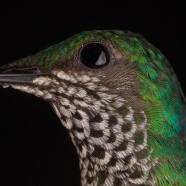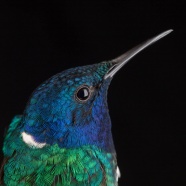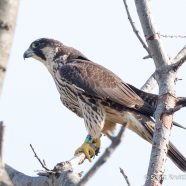White-necked Jacobin (Florisuga mellivora) Female
Here’s the female White-necked Jacobin (Florisuga mellivora) hummingbird showing off a beautiful zebra-like gorget as photographed by RTPI Affiliate Sean Graesser.
Read MoreWhite-necked Jacobin (Florisuga mellivora)
Here’s the White-necked Jacobin (Florisuga mellivora) hummingbird, and this photo by RTPI Affiliate Sean Graesser shows where their name comes from. He says he has seen five males at one time at the feeders in Costa Rica despite it being “out of range” for species in the area. RTPI President Twan Leenders says the local eBird reviewers give him a tough time about it…thankfully there is photographic proof!
Read MoreIdentify This!
Do you know what this piece of natural artwork is? Your answer will come tomorrow…guess on!
Read MoreBanded Peregrine Falcon
Here is a recent flashback story for everyone on this lovely Friday. October is always a terrific month to find all sorts of raptors making their way south for a prolonged migration or dispersing from their nesting area to find acceptable wintering grounds. Peregrine Falcons (Falco peregrinus) continue to rebound from their demise due to pesticides in our region in the last century, taking up breeding sites on skyscrapers in major cities, under bridges on interstates, and even nest box platforms at locations like Dunkirk’s power plant on Lake Erie in our own Chautauqua County. Some of...
Read MoreDiverse Song Sparrows
The Song Sparrow (Melospiza melodia) is such a diverse species despite the fact it seems so plain, brown, simple or even “dull”. Fall migration lets us see so many different subspecies and forms – perhaps up to a couple dozen of the former and several dozen of the latter. Basically, many of the birds end up looking distinct from one another in very subtle ways, and I wish every year that I could better understand their biology. Scott Kruitbosch Conservation & Outreach Coordinator
Read More








